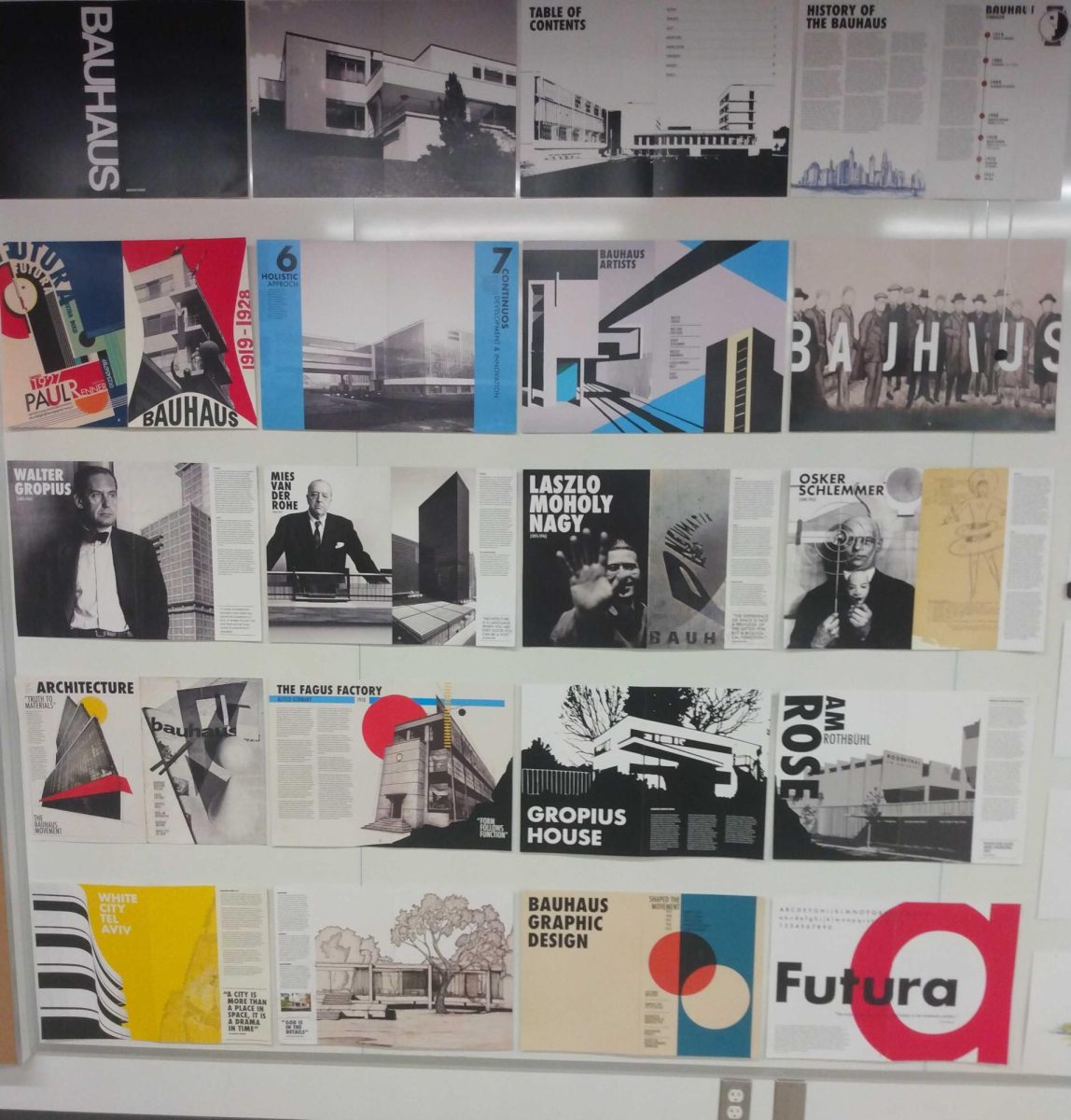On April 15, the Bruce Dice Mineralogical Museum kicked off its newly updated meteorite exhibit with Meteorite Madness, an event that highlighted the new exhibit; hosted various meteorite collectors and their specimens; and featured talks from physics and astronomy professor and Calvin Observatory Director Larry Molnar and professional meteorite cutter and dealer Craig Zlimen, owner of Minnesota Meteorites.
Spearheaded by Dice Museum Director and geology, geography and environment lecturer Kent Ratajeski, Meteorite Madness expanded to two classrooms: one where visitors could view slices of meteorite through microscopes, and another where five meteorite collectors — including Ratajeski — displayed their meteorite specimens and conversed with visitors.
Ratajeski collaborated with Molnar, who helped publicize the event by asking Zlimen to bring some of his meteorites to one of Molnar’s classes. Ratajeski focused on spreading the word both inside and outside the Calvin community, using a variety of advertising methods.
Creating the exhibit
According to Ratajeski, Meteorite Madness stemmed from his passion for meteorites that originated during the COVID-19 pandemic. “I started collecting meteorites and I was just amazed you could buy them online and learn a lot about them,” Ratajeski told Chimes.
What person doesn’t like rocks from space?
After assuming the role of director in August 2023, Ratajeski wanted to add to the museum’s existing meteorite collection: his hopes for an opening of the exhibit became a reality months later. To Ratajeski, expanding the meteorite exhibit could attract more visitors because “What person doesn’t like rocks from space?”
As Ratajeski and student worker Chafer Jolman curated the new exhibit, Ratajeski said he wanted to add meteorites from the moon and Mars that “would have the ‘wow’ impact factor.”
People are able to see these things that they would probably otherwise never see in their lives. It’s cool to be a part of that, [to] be able to share that.
“We have a lunar meteorite and a martian meteorite, I mean, less than 1% of all meteorites on Earth are from the moon, and even less than that are from Mars,” Jolman told Chimes. “People are able to see these things that they would probably otherwise never see in their lives. It’s cool to be a part of that, [to] be able to share that.”
Ratajeski told Chimes that he included a meteorite intended to catch the viewer’s eye and included a “big, stony meteorite” that “[shows] a lot of the features that formed during entry into the atmosphere.”
To further highlight the stories of the meteorites, the exhibit features information boards behind the specimens that describe the meteorites on display. According to Jolman, the information board is “something totally new for the museum.”
Recruiting meteorite collectors
Ratajeski wanted to use the new exhibit as an opportunity to expand the event beyond the museum. Ratajeski reached out to 2011 Calvin alumnus Nicolas Schuck, who is an active meteorite collector, to recruit potential meteorite collectors who would be willing to attend. Schuck gave Ratajeski the names of meteorite collectors whom he met through various astronomy and space events.
Three meteorite collectors who joined Schuck and Ratajeski in presenting their collections were Michigan residents Chris Cooper, Mark Jeffery and Craig Whitford, the last of whom is a meteorite collection coordinator at Michigan State University’s Abrams Planetarium.
Kicking off Meteorite Madness
During the five-hour event, the five exhibitors displayed their meteorite samples in the microscope room and in several display cases. Visitors viewed the meteorites and learned more about the specimens from the collectors.
Intermittently, people could hold pieces of meteorite. “The other thing with meteorites is they are the only things in astronomy that you can touch,” Whitford told Chimes, which means they “represent a tangible link to space.”
Cooper’s collection boasts a wide variety of objects from the moon, Mars and meteorites that fell in Michigan. People can collect meteorites in a variety of ways; some people hunt for meteorites, relying on meteor-tracking sites like the American Meteor Society or even the Doppler radar, which can pick up on explosions when the meteor hits Earth’s atmosphere, according to Cooper.
People can also buy meteorites from a variety of places, including online, according to Ratajeski. Since fakes are also sold online, Ratajeski said that relying on Facebook groups like the meteorite club Facebook group he’s a part of helped him “learn different meteorite types and who the reputable dealers are.”
After Molnar’s talk on asteroid dynamics, Zlimen gave a talk where he presented his vast meteorite collection, which took up three tables.
Ratajeski described Zlimen’s collection as “by far the most amazing collection of meteorites I’ve ever seen in my life.”
Turnout, looking forward
I think it’s good to see the number of people who are interested in geology from other worlds, and to be able to experience it through touch adds an element to it…that’s nice to see.
Meteorite Madness received “rave reviews pretty much all around,” according to Ratajeski. “The people that came were really enthusiastic; they learned a lot. They, you know, expressed their thanks for the event,” Ratajeski told Chimes.
Schuck said that it was “rewarding to see so many people get to experience meteorites up close, and see their excitement about these visitors from space.”
Whitford expressed his excitement at Meteorite Madness appealing to people from different backgrounds and perspectives. “I think it’s good to see the number of people who are interested in geology from other worlds, and to be able to experience it through touch adds an element to it…that’s nice to see,” Whitford told Chimes.
In addition to receiving positive feedback, the Dice Museum experienced an uptick in visitors due to Meteorite Madness. During the time Meteorite Madness ran, the Dice Museum’s records reported that 153 people visited the Museum, according to Ratajeski. He noted that this number may be the minimum because if people went to other venues in the Meteorite Madness event but not the Museum, they were not counted in the records.
With Meteorite Madness’s success, and the expansion of the Museum’s meteorite exhibit, Ratajeski not only hopes that more people continue to visit the Dice Museum, but that this continued exposure helps neighboring departments. “My goal is to get more people to realize what we have here and I think it would benefit not only the museum but the departments here,” Ratajeski said. “It’s part of the department of geology, geography and environment and we get a lot of our docents from that department so it’s a symbiotic relationship there.”
To see the expanded meteorite exhibit, visit the Dice Museum on the first floor of North Hall Tuesday through Friday from 12-5 p.m. The Museum will be closed for final exams from April 27 to May 2.










